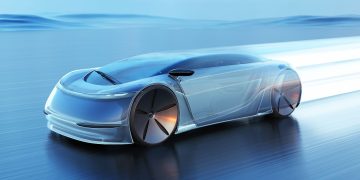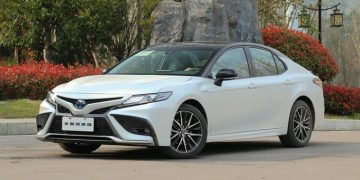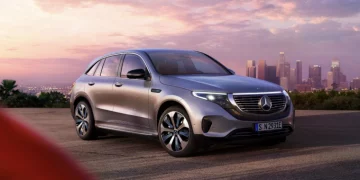Introduction: The Growing Role of Emission Regulations in Shaping the EV Landscape
In the quest to combat climate change and reduce harmful pollutants, governments around the world have introduced stricter emissions regulations for vehicles. These regulations are not only aimed at reducing the environmental footprint of the transportation sector but are also becoming a driving force behind the global shift toward electric vehicles (EVs). With traditional internal combustion engine (ICE) vehicles being major contributors to carbon emissions and urban air pollution, many countries are turning to electric vehicles as part of their strategy to reduce dependence on fossil fuels and achieve environmental sustainability goals.
This article will explore how tightening emissions standards are influencing both consumers and manufacturers, driving the growth of the electric vehicle market, and shaping future policies. We will examine the current state of emission regulations worldwide, how they impact the automotive industry, and the role they play in accelerating the adoption of electric vehicles. Moreover, we will look at the potential implications of these regulations for future policy development, consumer behavior, and market dynamics.
The Global Push for Stricter Emission Regulations
1. The Rise of Emission Standards
In the past few decades, concerns about climate change and urban air quality have prompted governments worldwide to implement progressively stricter emissions standards for vehicles. These regulations are designed to limit the amount of pollutants—such as carbon dioxide (CO2), nitrogen oxides (NOx), particulate matter (PM), and hydrocarbons—that vehicles can emit. Emissions standards vary significantly by region, but they all aim to reduce the environmental impact of the transportation sector.
For instance, the European Union has introduced a series of emissions standards, known as the Euro emissions standards, which progressively lower the allowable limits for vehicle emissions. The most recent, Euro 6, which applies to new vehicles, places stringent limits on pollutants such as NOx and particulate matter. Similarly, the United States has implemented Corporate Average Fuel Economy (CAFE) standards, which set fuel efficiency requirements for automakers, while also limiting emissions from new cars and trucks.
As countries strive to meet their climate targets set by international agreements like the Paris Agreement, they are tightening these emissions regulations even further. This has created an environment where automakers must adapt their strategies to meet these standards, and the push toward electric vehicles has become one of the most viable solutions.
2. The Environmental and Health Impacts of Emissions
Vehicle emissions have long been a significant source of air pollution, particularly in urban areas where high traffic density exacerbates the problem. Carbon dioxide (CO2), the primary greenhouse gas emitted by vehicles, contributes to global warming and climate change. Additionally, nitrogen oxides (NOx) and particulate matter (PM) from diesel and gasoline engines are harmful to human health, contributing to respiratory problems, heart disease, and premature deaths.
In response to these health and environmental concerns, governments are adopting more stringent emissions regulations. The goal is to reduce the harmful effects of air pollution and to mitigate the impacts of climate change. By setting higher standards for vehicle emissions, policymakers are pushing both consumers and manufacturers toward cleaner alternatives, with electric vehicles standing out as the most effective solution.

The Role of Emission Regulations in Driving EV Adoption
1. Increasing Pressure on Manufacturers
Automakers have long been reliant on internal combustion engines (ICE) to power their vehicles. However, as emissions regulations become stricter, many manufacturers are finding it increasingly difficult to meet these standards with traditional gasoline and diesel-powered cars. In order to comply with tightening emissions limits, manufacturers must either invest in more efficient internal combustion engines or develop new, cleaner technologies.
Electric vehicles, with their zero-emissions operation, offer an attractive alternative to traditional vehicles. By shifting their production toward electric vehicles, manufacturers can meet the regulatory requirements for emissions while also positioning themselves as leaders in the growing green vehicle market. As emissions regulations become more stringent, automakers are increasingly incentivized to accelerate their shift toward EV production.
For example, in the European Union, automakers are required to reduce their fleet-wide CO2 emissions to an average of 95 grams of CO2 per kilometer by 2021. To achieve this target, many manufacturers have begun to heavily invest in electric vehicle technology. Similarly, in the United States, stricter fuel efficiency standards are encouraging automakers to produce more electric and hybrid vehicles to meet the CAFE standards.
2. Consumer Shift Toward Cleaner Vehicles
While emission regulations have directly impacted manufacturers, they have also influenced consumer behavior. As awareness of environmental issues increases, more consumers are seeking cleaner, more sustainable transportation options. Stricter emissions standards are pushing consumers toward electric vehicles as they become increasingly aware of the environmental benefits and long-term cost savings associated with EV ownership.
Moreover, the incentives provided by governments to make electric vehicles more affordable, such as tax credits, rebates, and reduced registration fees, are helping consumers make the switch. In some cases, governments have even implemented low-emission zones or congestion charges, which restrict the entry of high-emission vehicles into city centers. These policies further encourage consumers to consider electric vehicles as a cleaner, more convenient alternative.
For example, cities like London and Paris have introduced low-emission zones where high-polluting vehicles are subject to hefty fines. This has pushed many urban residents to choose electric vehicles, which are exempt from these charges. Similarly, China has implemented strict emissions standards that have made it difficult for traditional gasoline-powered vehicles to comply with government regulations, further accelerating the demand for electric vehicles.
Emission Regulations and the Future of the Electric Vehicle Market
1. The Expansion of Low-Emission Zones
One of the key ways in which governments are encouraging the adoption of electric vehicles is through the establishment of low-emission zones (LEZs) and zero-emission zones (ZEZs) in major cities. These areas are designed to restrict the use of high-emission vehicles, creating an environment where electric vehicles are the preferred option.
Cities like London, Oslo, and Berlin have already implemented such zones, and many others are considering similar measures. These zones not only help reduce air pollution and improve public health but also act as a powerful incentive for consumers to switch to electric vehicles. As the number of low-emission zones increases, the demand for electric vehicles is expected to rise as more consumers seek to avoid fines and restrictions on traditional vehicles.
2. Stronger Emission Standards in the Future
Looking ahead, it is clear that emission regulations will continue to tighten in many regions. The European Union, for example, has set ambitious targets for reducing emissions from the transportation sector, with plans to ban the sale of new gasoline and diesel cars by 2035. Similarly, several U.S. states, including California, have set similar goals for phasing out the sale of new internal combustion engine vehicles over the next few decades.
These future regulations will further accelerate the growth of the electric vehicle market. Automakers will face increasing pressure to develop cleaner vehicles, and consumers will have more incentives to adopt electric vehicles as restrictions on traditional vehicles intensify. Additionally, as the market for electric vehicles grows, economies of scale will reduce the cost of EV production, making them more accessible to a wider range of consumers.
3. The Integration of Emission Regulations with Broader Sustainability Goals
Emission regulations are not only shaping the growth of the electric vehicle market but also playing a crucial role in broader sustainability goals. Many governments are incorporating electric vehicle adoption into their larger strategies for reducing carbon emissions and promoting clean energy. By aligning emission regulations with other climate policies, such as renewable energy targets, governments are creating a comprehensive framework for reducing the carbon footprint of the transportation sector.
For instance, in the European Union, the “Green Deal” aims to reduce net greenhouse gas emissions to zero by 2050. Electric vehicles are seen as a key component of this plan, as they provide a path to decarbonizing the transportation sector. Similarly, countries like Canada, the U.S., and Japan are aligning their electric vehicle policies with their climate commitments, ensuring that the transition to electric vehicles is part of a broader effort to address climate change.
Conclusion: Emission Regulations as a Catalyst for the Electric Vehicle Revolution
Emission regulations are playing a pivotal role in accelerating the transition to electric vehicles. By tightening emissions standards and introducing policies that favor clean transportation, governments are driving both manufacturers and consumers toward electric vehicles. These regulations are reshaping the automotive industry, encouraging innovation, and increasing the demand for zero-emission transportation.
As emission standards continue to tighten globally, the electric vehicle market is expected to grow rapidly. The development of more stringent regulations, along with the expansion of incentives for consumers and manufacturers, will help make electric vehicles the norm rather than the exception. In the long run, emission regulations will not only help reduce carbon emissions and improve air quality but also contribute to the creation of a cleaner, more sustainable transportation system for future generations.











































